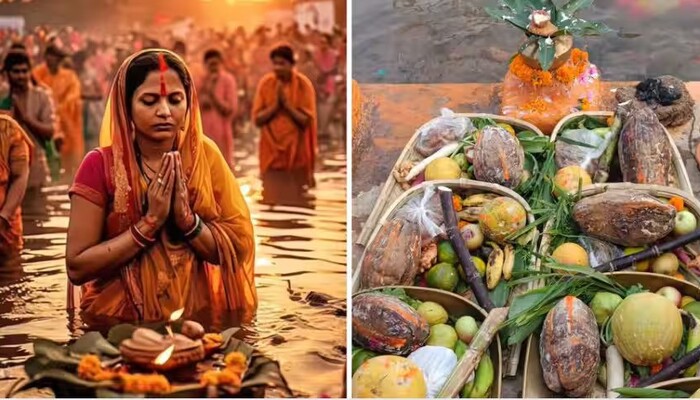Lucknow – Chhath Puja, one of the most revered festivals in India, is celebrated from the fourth day (Chaturthi) of the Kartik month to the seventh day (Saptami), beginning with the ritual of Nahay Khay and culminating with offering prayers to the rising sun. The festival is dedicated to worshipping Lord Bhaskar (the Sun God) and Chhathi Maiya, his sister, and is especially observed for the well-being, longevity, and prosperity of children.
Mythological Origins and Stories
The origins of Chhath Puja are rooted in several ancient legends. One story from the Puranas narrates that King Priyavad and his queen Malini, who were childless, were advised by Sage Kashyap to perform a ritual. When their child was born dead, Priyavad was devastated. At that moment, Chhathi Maiya appeared and instructed the king to observe a fast in her honor. Following her guidance, the king was blessed with a child, and the tradition of Chhathi Maiya worship began.
Another legend attributes the festival to Karna, the son of the Sun God, during the Mahabharata era. Karna, the king of Anga (present-day Bhagalpur, Bihar), offered prayers to the Sun for hours every day, standing waist-deep in water. His devotion is said to have granted him divine armor and earrings. Similarly, Draupadi is believed to have observed Chhath Puja to restore her family’s fortune after the Pandavas lost their kingdom in a game of dice.
Other accounts trace the festival to the Ramayana era, when Mata Sita, during her exile, performed the Chhath vrat on the sixth day of Kartik, as instructed by Rishi Mudgal, to cleanse the sins of Lord Rama after the slaying of Ravana. Today, traces of Sita’s footprints are said to remain at the Munger temple in Bihar.
Rituals and Observances
Chhath Puja spans four days, each with distinct rituals:
-
Nahay Khay: The first day involves a ritual bath and consumption of pure vegetarian meals prepared with devotion, marking the beginning of the fast. Traditional dishes include rice, lentils, and bottle gourd curry (lauki).

-
Kharna or Lohanda: On the second day, devotees observe a day-long fast without water, breaking it in the evening with a special meal prepared from rice, jaggery, and wheat flour rotis cooked in ghee. The meal is offered as prasad on banana leaves, and family members partake in it.
-
Sandhya Arghya (Evening Offering): On the third day, devotees prepare sweets, fruits, and traditional offerings such as thekua and dates at home. In the evening, families gather at rivers, ponds, or canals to offer prayers to Chhathi Maiya and the setting sun, standing waist-deep in water. Traditional songs are sung, and lamps are lit to honor the deity.
-
Usha Arghya (Morning Offering): The festival concludes on the fourth day before sunrise. Devotees again visit water bodies to offer prayers to the rising sun, seeking blessings for fulfillment of wishes, family well-being, and longevity. This marks the end of a rigorous 36-hour fasting and prayer cycle, culminating with the exchange of prasad.
Significance
Chhath Puja is celebrated with strict adherence to rituals and satvik (pure) food, emphasizing devotion, discipline, and gratitude. It is widely regarded as one of the most spiritually significant festivals in India, blending mythology, family bonding, and the worship of the Sun God and Chhathi Maiya. The festival not only symbolizes devotion and purity but also strengthens community participation and cultural heritage.
This year, Chhath Puja 2025 will be observed from October 25 to October 28, with millions across India and abroad participating in the traditional ceremonies, making it a grand celebration of faith and devotion.






